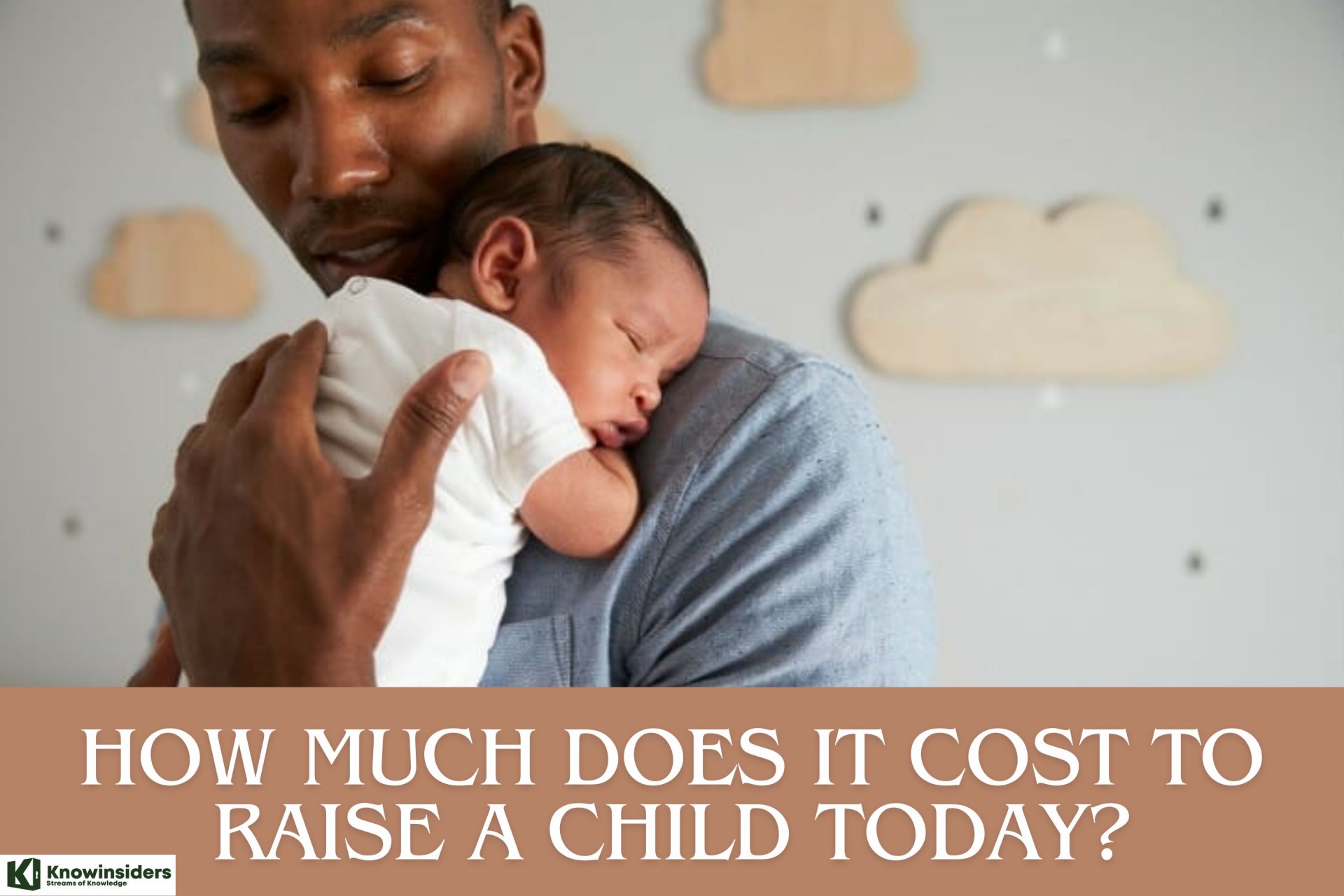How Much Does It Cost To Raise a Child in the U.S Today?
| Summary |
The cost of raising a child can vary dramatically depending on geographic location. Urban centers tend to be more expensive than rural areas. States like New York and California are known for high costs of living, impacting everything from housing to childcare.
The cost of raising a child to the age of 18 in the United States typically ranges between $200,000 and $300,000, excluding college education. These figures highlight the importance of diligent planning and budgeting to ensure that parents can meet their children's needs while securing their financial future. As daunting as these numbers may seem, the rewards of parenting often surpass the financial investment, making the journey worthwhile.
Raising a child is one of life's most rewarding experiences, but it also comes with a substantial financial commitment. From the initial costs of pregnancy to preparing for college, the financial planning involved can seem daunting. This comprehensive guide will explore the various expenses associated with raising a child, effective budgeting strategies, and how to prepare financially for this significant life change.
 |
| How Much Does It Cost To Raise a Child Today? |
What is the annual cost of raising a child?
According to USDA data from 2015, a married couple with two kids could budget $12,980 per child per year. Taking inflation into consideration, this figure is probably closer to $16,978 per child today.
This figure can vary significantly depending on where you live and how you prioritize your spending in your budget. The annual cost would be lower if you were only paying for necessities, but you could wind up spending a lot more if you factor in things like toys, family vacations, piano lessons, extra care, and other optional expenses.
Initial Costs: Pregnancy and Childbirth
The journey begins with pregnancy, which can incur costs for medical care, maternity clothing, and preparations for the newborn's arrival. Childbirth costs vary significantly depending on geographic location, type of delivery, and whether you have health insurance. On average, the cost of childbirth in the U.S. ranges from $5,000 to $11,000. The first year of a child's life can cost anywhere from $20,000 to $50,000, depending on healthcare expenses and childcare needs.
Basic Needs
As children grow, so do the expenses. Housing is often the largest cost, as families may seek larger living spaces. Food, clothing, healthcare, and transportation also form significant parts of the family budget. Education costs can vary widely, with public schooling being generally less expensive than private education. However, extracurricular activities, school supplies, and field trips can add up.
Housing
The need for additional space can lead to moving to a larger home, significantly impacting family finances. At 29% of the total costs of raising a child, housing is the most expensive aspect of childrearing. The annual cost estimates provided by the USDA indicate that you should budget roughly $5,235 for housing alone each year.
Food
As children grow, food expenses increase, especially considering dietary needs and preferences. At 18%, food expenses rank as the second-highest cost of raising a child. There are a lot of variables that can affect this cost, such as your child's age, whether you choose to buy formula for babies, eating at home instead of going out to eat, and more, but on average, you should budget $3,249 for food each year.
Healthcare
Healthcare includes regular check-ups, vaccinations, and medical emergencies. It's important for parents to consider health insurance options to manage these costs effectively. Routine check-ups, vaccinations, and unexpected medical issues are ongoing costs. Health insurance can mitigate these expenses, but out-of-pocket costs can still be substantial.
Childcare
For working parents, childcare is often one of the largest expenses, with costs varying widely by location and type of care. Childcare is a major expense for working parents, with costs comparable to housing in many cases. Each year, the cost of childcare can easily take up a significant portion of parents' budgets. The type of care required, the number of children in need of care, and the family's location can all affect how much a family must pay. The price range for school-age home-based care in small counties was $5,357 in 2022, while the price for infant center-based care in large counties was $17,171.
Education
From preschool to high school, education costs can be hefty, especially if private schooling or special educational needs are considered. The school journey, starting in preschool and going all the way through high school, is one of the biggest financial commitments a parent makes. Preschool sets the financial tone early; the annual cost to parents is approximately $10,000. As kids get older and if private education is desired, the annual tuition usually comes out to be about $12,350. When you take into account technology, textbooks, and other necessities, the cost can rise to about $16,050 per year.
However, even though public schools provide education without charging tuition, they do incur costs. Extracurricular activities like sports and the arts may come with a price. For example, a University of Michigan study found that parents may spend $218 on arts-related activities or $302 on sports for each student.
Transportation
Having children often changes transportation needs, possibly requiring a larger or safer vehicle. Family-sized vehicles and increased travel can raise transportation costs. When children are between the ages of 15 and 17, transportation costs, including car payments, gas, insurance, airline tickets, and public transportation, reach their peak. Naturally, a lot of teenagers begin driving at that age. USDA data indicate that it also represents a rise in participation in activities that take place further away from home.
Clothing
Children continuously outgrow clothes, requiring frequent updates to their wardrobes. In contrast to most other expenses, this number has decreased over the previous 50 years as Americans have shifted to purchasing inexpensive apparel made abroad. Unusual also is the tendency for clothing prices to change annually based on prevailing fashions.
Long-Term Planning and Budgeting for Children
 |
| How Much Does It Cost To Raise a Child Today? |
Budgeting is crucial. Families should start by assessing their income, savings, and expenses. Creating a dedicated savings account for child-related expenses can help manage financial stress. Many parents choose to cut unnecessary expenses and find creative ways to save, such as buying second-hand children’s clothes or toys.
College
Saving for college is a major financial goal for many parents. The cost of a college education is not covered by the necessities. When parents contribute to their children's college expenses, a higher education can make a bigger difference overall. The following factors may affect how much parents must pay for college:
♦ attends a university for two or four years
♦ attends a university, either public or private
Is the tuition for public universities either in-state or out-of-state?
For the 2023–2024 academic year, the average annual cost (in-state) for a public college is $24,030, while the average cost for a private college is $55,190. It covers the price of lodging and board as well as tuition and fees.
Life Milestones
Planning for your child’s future involves setting aside money for college and other significant life events. Investing in a college savings plan like a 529 plan can be a wise decision. Additionally, unexpected costs such as emergencies or special needs should be considered, making a robust emergency fund essential.
Unexpected Costs
Emergencies can arise without warning, making an emergency fund crucial. Parents must budget for extracurricular activities, sports and hobbies, family travel or vacations, healthcare and insurance, and the cost of housing, food, childcare, and education.
Impact of the Number of Children
More children equals larger economies of scale. According to a Statistics Canada study, families with two children spend 20% to 38% less on each child than families with one child. Spending is 8% to 15% less per child for families with three children than for families with two children. The fact that many toys and clothes can be recycled and that furniture and accessories can be reused helps to explain these savings.
Daycare contributions are halved for the second and all subsequent children, regardless of whether they are based on family income.
In exchange, a portion of the costs will be shared, and if you have to move or buy a new car for the family, the impact on the budget might be even bigger.
Budgeting and Saving Tips for Parents
Effective family budgeting can help manage the costs of raising a child. Tips include:
Budget Planning: Regularly updating the family budget to accommodate growing needs.
Cost Cutting: figuring out ways to cut expenses, like buying used toys or clothing and cooking meals at home.
Savings: Establishing a savings routine early can help mitigate future financial pressures.
Government Assistance: investigating family-friendly tax breaks and subsidies, such as school grants and child tax credits.
Costs To Raise a Child in Each State
The cost of raising a child varies significantly by location. States like New York and California are among the most expensive due to high costs of living, whereas states like Utah and Kentucky tend to be more affordable.
The U.S. Census Bureau, the Massachusetts Institute of Technology (MIT) Living Wage Calculator, Child Care Aware, the U.S. Bureau of Economic Analysis, the Kaiser Family Foundation, and Tax Foundation data were analyzed by LendingTree to create this ranking.
Hawaii - $30,506
District of Columbia - $30,097
Washingon - $28,166
Massachusetts - $27,535
Maryland - $27,317
New York - $26,017
California - $25,680
Oregon - $25,432
New Jersey - $25,390
Nebraska - $25,280
Colorado - $25,169
Connecticut - $25,099
Virginia - $24,317
Minnesota - $24,242
Alaska - $23,545
Kansas - $23,327
Vermont - $23,021
Nevada - $22,436
Illinois - $22,310
New Hampshire - $22,060
Oklahoma - $21,290
Arizona - $21,179
Rhode Island - $21,087
Montana - $20,727
Wisconsin - $20,612
Maine - $20,474
Pennsylvania - $20,405
North Carolina - $20,156
New Mexico - $20,078
Utah - $19,946
Texas - $19,921
North Dakota - $19,710
Delaware - $19,521
West Virginia - $19,509
Missouri - $19,498
Michigan - $19,411
Idaho - $19,329
Indiana - $19,150
Florida - $18,914
Iowa - $18,779
Tennessee - $18,474
Wyoming - $18,261
Ohio - $17,657
Kentucky- $17,607
South Carolina - $17,085
Louisiana - $16,869
Georgia - $16,477
South Dakota - $16,395
Arkansas - $16,284
Alabama - $16,192
Mississippi - $15,555
In Conclusion
Raising a child requires careful financial planning and budget management. By understanding the costs involved and planning accordingly, parents can provide a secure and enriching environment for their children, paving the way for their successful future.
FAQsHow much will it cost to raise a child?According to a 2015 USDA study, the average cost of raising a child from birth to age 18 for a middle-class, two-parent family with two children was estimated to be $233,610. That sum increases to almost $286,000. This amount is adjusted for inflation. Raising a child until the age of 18 in 2023 and beyond is probably going to cost more than this amount, given the ongoing upward trend in costs. In order to be prepared for the financial ramifications of such a long-term commitment, parents and those thinking about starting a family must be aware of these costs. What aspect of raising a child costs the most money?Housing is always the biggest expense when it comes to raising a child among all the other costs. This comprises not just the purchase price of the house but also associated expenses like utilities, upkeep, and premiums associated with the location, such as proximity to respectable schools. Over the course of a child's life, housing typically requires a larger portion of a family's budget, even though other expenses like food, education, and child care also have a significant impact. When considering the cost of raising a child, it's important to account for these housing-related costs and make appropriate plans. Which state has the highest child-rearing costs?Although there are many expensive states in the United States to raise a family, according to data from the Economic Policy Institute, California, Washington, D.C., and Massachusetts are often among the most expensive places. These inflated costs are a result of various factors, including housing, education, child care, and the general cost of living. |
 Top 10 Most Expensive Private Colleges in the U.S By Net Cost Top 10 Most Expensive Private Colleges in the U.S By Net Cost Let’s explore the private colleges with the highest tuitions in the US in 2024. |
 Top 10 Cheapest Private Colleges (But Prestigious) in the U.S By Net Cost Top 10 Cheapest Private Colleges (But Prestigious) in the U.S By Net Cost Check out Top 10 Cheapest Private Colleges In The US By Net Cost and their admission requirements. |
 Funeral in Australia: Cost, Ultimate Guide, Insuranc and Most Expensive To Die Funeral in Australia: Cost, Ultimate Guide, Insuranc and Most Expensive To Die In actuality, some Australian cities have higher death rates than others. What is the current cost of burying a person in Australia? |


























